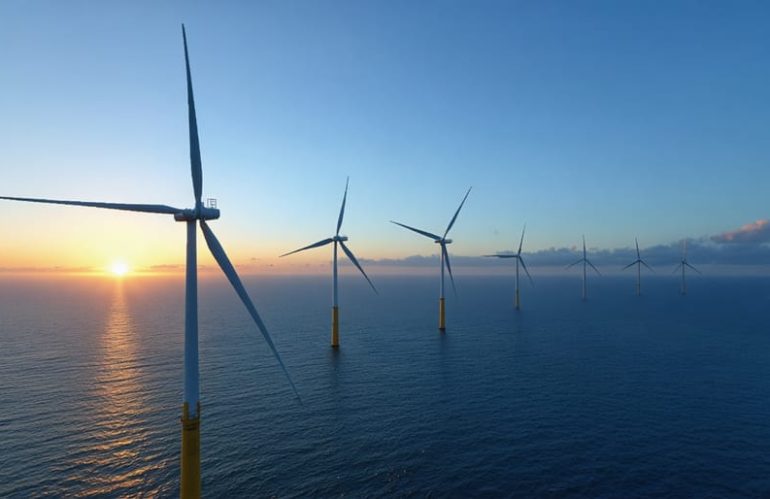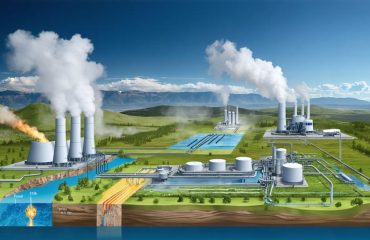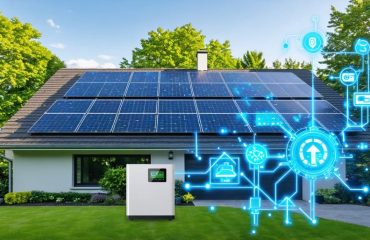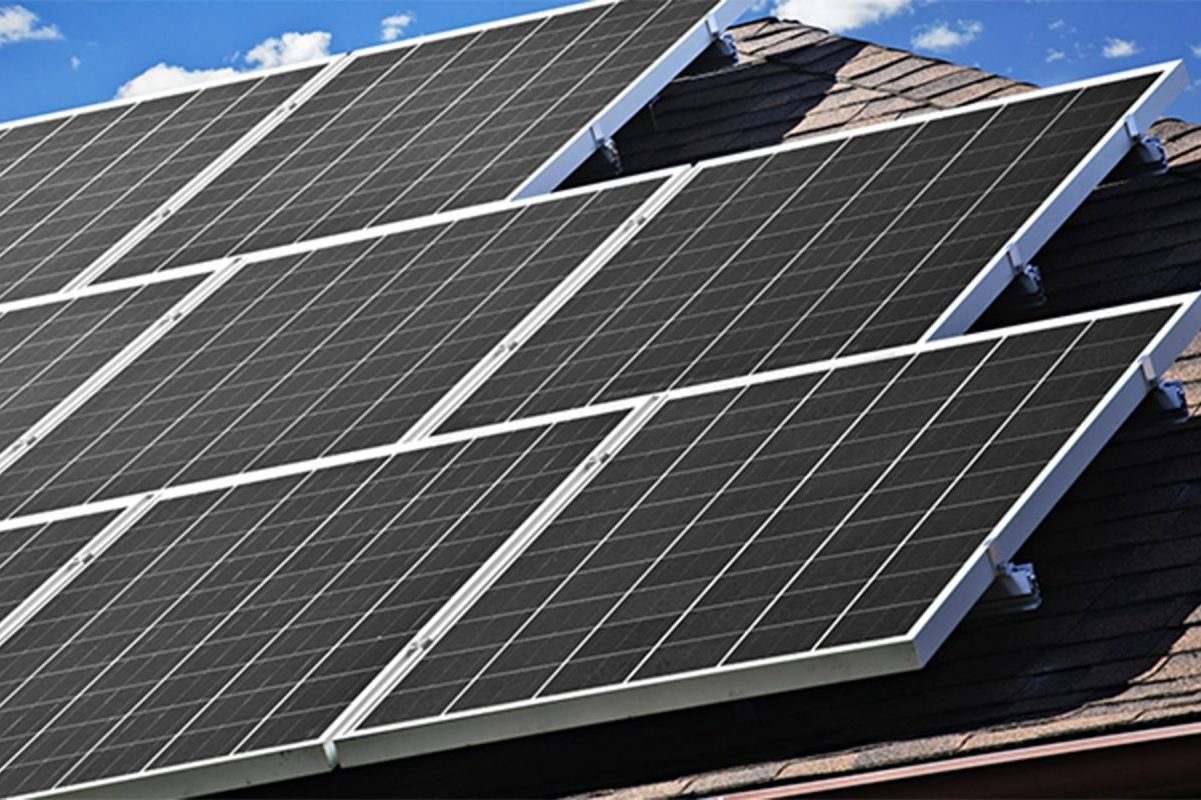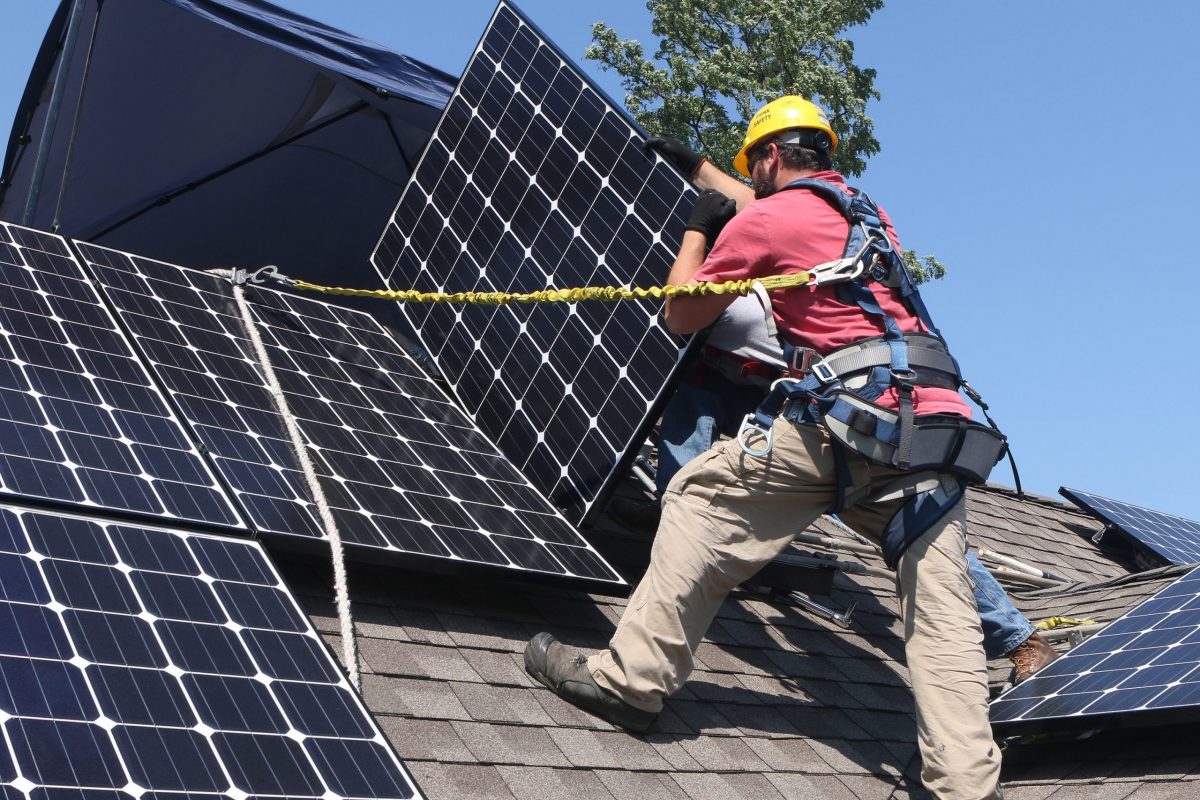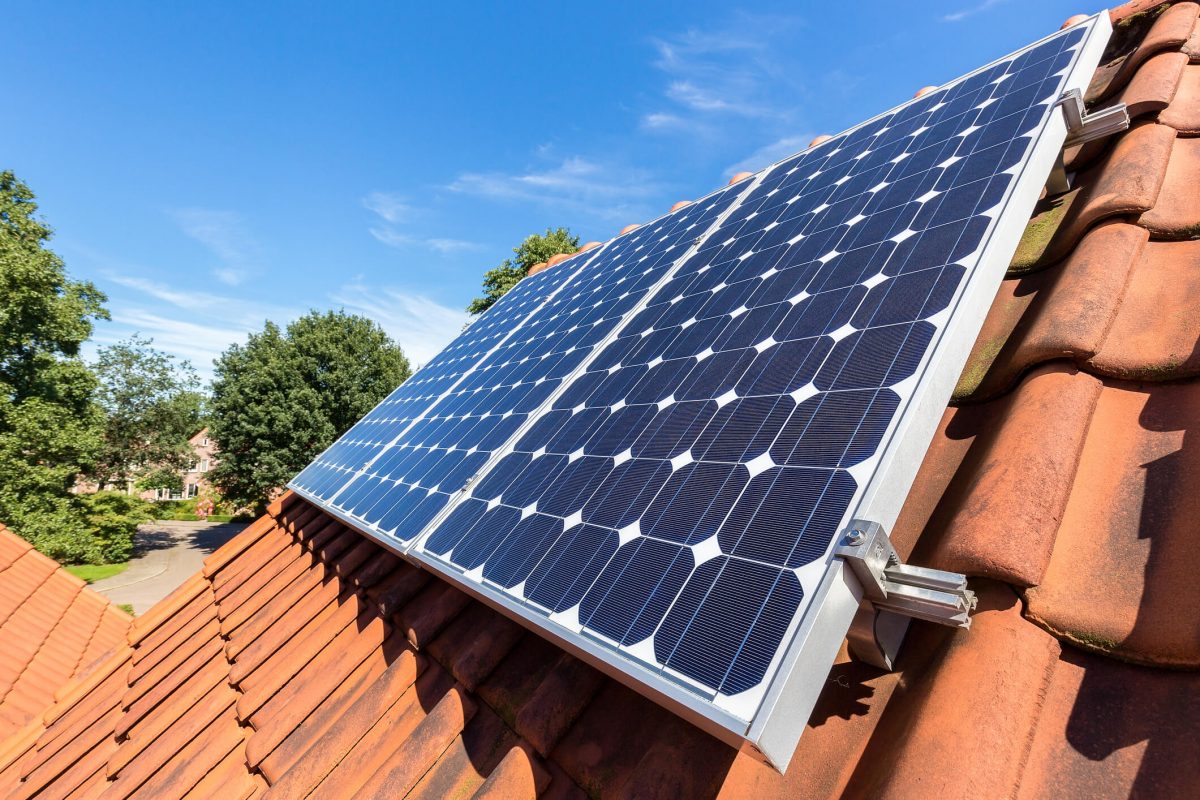Offshore wind energy stands at the forefront of our clean energy revolution, promising to deliver true energy independence while transforming our coastal regions into renewable powerhouses. With turbines capable of generating enough electricity to power millions of homes, offshore wind farms harness the ocean’s consistent, powerful breezes to produce clean energy at an unprecedented scale.
Unlike their land-based counterparts, offshore wind turbines benefit from stronger, more reliable winds and can be built larger, dramatically increasing their energy output. This emerging industry not only addresses our growing energy demands but also creates thousands of green jobs, stimulates coastal economies, and reduces our carbon footprint without consuming valuable land resources.
As countries worldwide race to meet ambitious climate goals, offshore wind development represents a critical piece of the renewable energy puzzle. With technology costs plummeting and installation efficiency improving, these maritime clean energy platforms are becoming increasingly attractive to both investors and energy consumers, promising a future where sustainable power generation meets rising global energy needs.
Why Offshore Wind is Revolutionizing Clean Energy
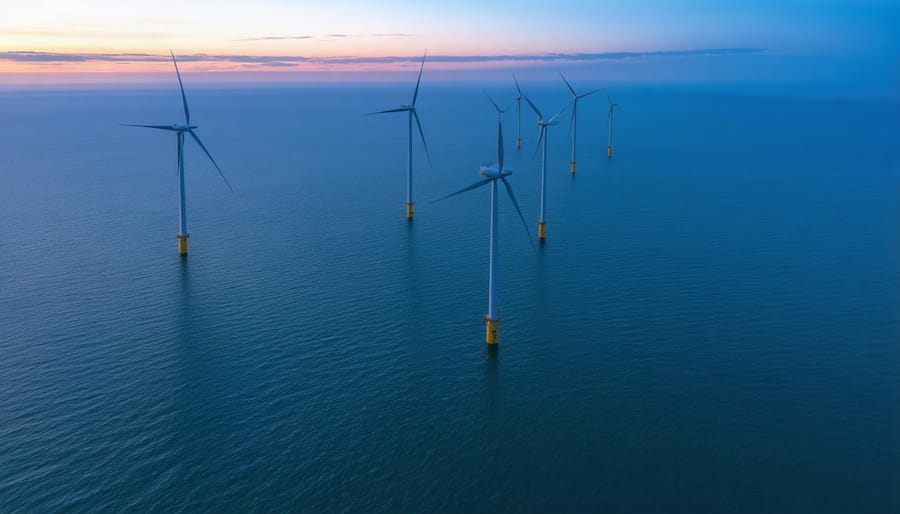
The Power of Ocean Winds
The ocean offers an incredible natural advantage for wind energy production that simply can’t be matched on land. When you step onto a beach, you’ve probably noticed how the wind seems stronger and more persistent – and there’s good science behind this observation.
Offshore winds are typically stronger and more consistent because there are no physical obstacles like buildings, hills, or forests to slow them down. The smooth ocean surface creates less friction compared to land, allowing wind to maintain higher speeds. Additionally, temperature differences between the land and sea create predictable daily wind patterns that make offshore wind farms more reliable power generators.
During hot summer days, when electricity demand peaks for air conditioning, offshore winds are at their strongest. This happens because land heats up faster than water, creating strong sea breezes that blow toward shore. At night, the pattern typically reverses, maintaining a consistent energy supply.
These natural advantages mean offshore wind turbines can generate up to 50% more electricity than their land-based counterparts, making them an incredibly efficient source of clean energy.
Space and Scale Benefits
Offshore wind farms offer unique advantages when it comes to space and scale that their land-based counterparts simply can’t match. At sea, wind turbines can be built significantly larger, often reaching heights of over 800 feet – nearly twice the size of typical onshore turbines. This increased size allows each turbine to capture more wind energy and generate more power.
The ocean’s vast open spaces eliminate many of the constraints faced on land, such as noise concerns, visual impact on communities, and competing land uses. This freedom allows developers to design more efficient wind farm layouts and install more turbines in a single location. A single offshore wind farm can power hundreds of thousands of homes while occupying a relatively small area of ocean space.
Additionally, offshore locations provide flexibility in positioning turbines to maximize wind exposure and minimize interference between units. The absence of geographical obstacles like hills or buildings means more consistent wind patterns and higher energy yields. This spatial advantage, combined with stronger and more reliable ocean winds, makes offshore wind farms particularly effective at generating clean, renewable energy at scale.
Current Offshore Wind Development Status
Success Stories in Europe
Europe has emerged as a global leader in offshore wind energy, with several remarkable success stories showcasing the potential of this renewable technology. The United Kingdom stands out with its Hornsea Project One, the world’s largest offshore wind farm, powering over one million homes with clean energy. This groundbreaking project has created thousands of jobs and significantly reduced carbon emissions since its completion in 2020.
Denmark’s Anholt Offshore Wind Farm demonstrates how careful planning and community engagement can lead to exceptional results. Operating since 2013, it supplies 4% of Denmark’s total power consumption and has become a model for sustainable energy development. The project’s success has helped Denmark achieve one of the highest percentages of wind power in its electricity mix globally.
The Netherlands’ Gemini Wind Park showcases innovative engineering solutions in challenging marine environments. Despite complex installation conditions, the project now powers 785,000 Dutch households and prevents 1.25 million tonnes of CO2 emissions annually. The project’s success has encouraged the Netherlands to set even more ambitious offshore wind targets.
Germany’s Baltic Sea projects have proven that offshore wind farms can coexist harmoniously with marine ecosystems. The Baltic 2 wind farm has become a haven for marine life while generating clean energy for 340,000 homes. These successful implementations have inspired other European nations to accelerate their offshore wind development plans, creating a ripple effect of sustainable energy adoption across the continent.
U.S. Offshore Wind Progress
The United States is making remarkable strides in offshore wind development, with several major projects currently underway along the East Coast. As of 2023, two commercial-scale wind farms – Vineyard Wind in Massachusetts and South Fork Wind off Long Island – are actively under construction, marking a significant milestone in American renewable energy.
The Biden administration has set an ambitious goal of deploying 30 gigawatts of offshore wind capacity by 2030, enough to power over 10 million homes. This commitment has catalyzed unprecedented growth in the sector, with states like New York, New Jersey, and Massachusetts leading the charge through aggressive clean energy targets and supportive policies.
Several coastal states have already leased substantial areas for wind development. New Jersey plans to generate 11 gigawatts from offshore wind by 2040, while New York aims for 9 gigawatts by 2035. Massachusetts has committed to 5.6 gigawatts by 2027, demonstrating strong regional momentum.
The development pipeline is robust, with over two dozen projects in various stages of planning and permitting. These projects are expected to create thousands of well-paying jobs, stimulate local economies, and establish new domestic supply chains. Major investments in port infrastructure and manufacturing facilities are already underway, positioning the U.S. to become a global leader in offshore wind technology and development.
Integration with Existing Energy Systems
Grid Connection Solutions
Connecting offshore wind farms to the mainland power grid requires sophisticated grid connection technologies that ensure reliable power transmission across vast distances. The most common method involves using high-voltage subsea cables, which carry electricity from offshore turbines to onshore substations.
These underwater cables are specially designed to withstand harsh marine conditions and typically use HVDC (High-Voltage Direct Current) technology for long-distance transmission. HVDC is preferred because it experiences lower power losses compared to traditional AC transmission, making it more efficient for connecting distant offshore installations to the mainland grid.
The connection process starts at offshore substations, where multiple turbines’ power output is collected and converted to the appropriate voltage for transmission. These substations are built on platforms that house essential equipment like transformers and switching gear. From there, export cables carry the power to shore, where it’s converted back to AC power at onshore substations before feeding into the existing power grid.
Modern grid connection solutions also incorporate smart technologies that help manage power flow and maintain grid stability. These systems can adjust power output based on grid demands and weather conditions, ensuring seamless integration with existing power infrastructure while maximizing the renewable energy delivered to homes and businesses.
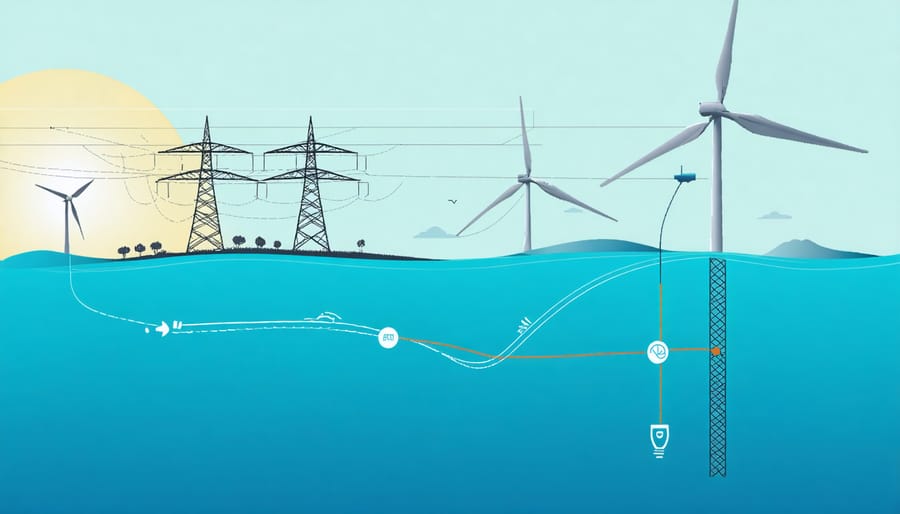
Balancing Wind with Solar
Offshore wind energy and solar power work together like perfect partners in the renewable energy dance. While solar panels generate electricity during daylight hours, offshore wind turbines can continue producing power throughout the night and during cloudy conditions. This complementary relationship creates a more reliable and consistent energy supply for homes and businesses.
The beauty of this partnership lies in their natural cycles. Wind speeds over the ocean typically increase during the evening and night hours, precisely when solar panels aren’t producing power. This timing helps maintain a steady power supply to the grid, reducing the need for expensive energy storage solutions. Moreover, solar power integration with offshore wind creates a more resilient energy system that can better handle seasonal variations.
During summer months, when solar production peaks, offshore wind typically experiences lower average speeds. Conversely, winter months bring stronger winds but less solar production. This seasonal balance helps utilities maintain consistent power generation throughout the year. For homeowners and communities investing in renewable energy, this combination offers more predictable energy costs and greater energy independence.
The synergy between these two renewable sources also helps reduce the overall infrastructure costs. By sharing transmission lines and grid connections, offshore wind and solar installations can maximize the use of existing power distribution systems, making renewable energy more cost-effective for everyone.
Economic and Environmental Benefits

Job Creation and Economic Growth
Offshore wind energy development is emerging as a powerful catalyst for job creation and economic growth across coastal regions. The sector creates diverse employment opportunities spanning multiple industries, from initial planning and construction to long-term operations and maintenance. Recent industry reports indicate that a single offshore wind farm can generate hundreds of direct jobs and thousands of indirect positions throughout its lifecycle.
These jobs range from highly skilled engineering roles to technical positions in turbine manufacturing, installation, and maintenance. Maritime professionals, environmental scientists, and project managers are also in high demand. The industry particularly benefits local communities through port revitalization projects and the establishment of manufacturing facilities, contributing to regional economic development and energy self-sufficiency.
The economic impact extends beyond direct employment. Supply chain opportunities create additional business growth, with local companies providing services and materials for wind farm construction and operation. Training programs and partnerships with educational institutions help develop skilled workforce pipelines, ensuring long-term economic sustainability.
Investment in offshore wind infrastructure also stimulates related sectors such as vessel construction, port development, and underwater cable manufacturing. Studies show that every dollar invested in offshore wind projects generates significant economic multiplier effects in local communities. For coastal regions facing economic challenges, offshore wind development offers a path to sustainable economic revival while contributing to clean energy goals.
The industry’s growth trajectory suggests continued expansion of job opportunities, with projections indicating substantial employment growth over the next decade as more projects come online and existing installations require ongoing maintenance and upgrades.
Environmental Advantages
Offshore wind energy stands out as one of the most environmentally beneficial forms of power generation, offering significant advantages in the fight against climate change. Unlike traditional fossil fuel power plants, wind turbines produce zero direct carbon emissions during operation, making them a crucial tool for reducing greenhouse gas emissions.
A single offshore wind farm can prevent millions of tons of CO2 from entering the atmosphere each year. For perspective, a typical 500-megawatt offshore wind project can offset approximately 1 million metric tons of carbon dioxide annually – equivalent to taking 200,000 cars off the road.
One of the most compelling environmental benefits of offshore wind is its minimal impact on land use. By positioning turbines in ocean waters, these installations preserve valuable terrestrial ecosystems and agricultural land. This approach eliminates the need to clear forests or modify existing landscapes, helping maintain natural habitats and biodiversity on shore.
Offshore wind farms can actually create artificial reefs, fostering marine life diversity. The turbine foundations serve as new habitats for various marine species, supporting local fishing industries while generating clean energy. Studies have shown that these structures often become thriving ecosystems, hosting mussels, fish, and other marine organisms.
Moreover, offshore wind farms typically operate at higher efficiency rates than their land-based counterparts due to stronger, more consistent ocean winds. This increased efficiency means more clean energy production per installation, maximizing the environmental benefits while minimizing the overall footprint of renewable energy infrastructure.
The environmental advantages extend beyond emissions reduction, as offshore wind farms require no water for cooling, unlike traditional power plants, helping preserve precious freshwater resources for other uses.
Offshore wind energy represents a powerful pathway toward energy independence, offering coastal nations and communities a reliable, renewable resource that can significantly reduce dependence on imported fossil fuels. As technology advances and costs continue to decline, offshore wind farms are becoming increasingly viable solutions for meeting growing energy demands while supporting environmental goals.
The strategic deployment of offshore wind projects creates a dual benefit: it generates clean, domestic energy while simultaneously creating thousands of local jobs in manufacturing, installation, and maintenance. This economic stimulation, coupled with energy security benefits, makes offshore wind a compelling component of any nation’s energy independence strategy.
Looking ahead, offshore wind is expected to play an increasingly vital role in the global energy landscape. With many countries setting ambitious renewable energy targets, offshore wind installations are projected to expand significantly over the next decade. This growth will not only help reduce carbon emissions but also provide a stable, predictable energy source that can operate independently of international fuel markets and geopolitical tensions.
For homeowners and communities, supporting offshore wind development means investing in a future where energy prices are more stable and predictable. As more offshore wind projects come online, they contribute to a more resilient and self-sufficient energy grid, protecting consumers from the volatility of global energy markets while advancing environmental sustainability goals.

